HISTORY OF OUR SHERIFFS
Click Photo For Information
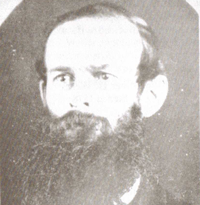 Sheriff
Sheriff Joesph Marks
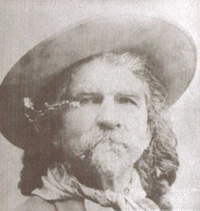 Sheriff
SheriffOliver Weller
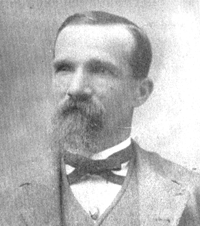 Sheriff
SheriffChris Rachford
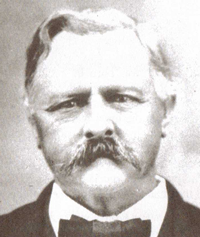 Sheriff
SheriffJohn Butcher
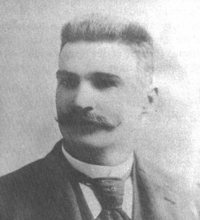 Sheriff
SheriffChester Parker
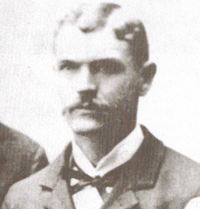 Sheriff
SheriffJohn Cummings
 Sheriff
SheriffEdward Hager
After Modoc County was established in 1874, Joseph Marks was appointed to the combined office of sheriff and tax collector in May of that same year. That madehim officially the first sheriff in Modoc County. Joseph Marks was a refugee from the Southern Confederacy. He first settled in Tri-Lake City, later called Lake City, the first organized community in Surprise Valley in 1864. Various recollections note that he was an agreeable and educated man. He married Fanny Gooch, and together, they had one child who died at a young age. In the early days of settlement within the county, Alturas became the county seat, and it was necessary for the newly appointed officials to live there. There was hardly appropriate housing, so Sheriff Marks built a large house to accommodate three families: his own and the families of G.F. Harris, the district attorney, and Mr. Fitzgerald, the county clerk. Court was held in the first community hall built in Alturas. It was a long building with a shed on the side that was divided into three rooms where the offices of county clerk, district attorney, and sheriff-tax collector were located. The hall was the first courthouse, as well as the first church, first theater, and first dance hall in Alturas. The jail was located at the present site of Veteran’s Memorial Park. It began operations in 1876, but it burned soon after. For $200, the county hired Alex Mitchell to build a new jail. It was a two-by-six, double spiked, planked building. The jail yard was enclosed by a tight 12-foot board fence. Following his office of sheriff, Joseph Marks was in the mercantile business, later on he clerked in E. Lauer and Sons store in Likely, then in George Bonner’s store in Davis Creek. Throughout his lifetime, he held many offices that mirrored the trust that the community had for him. He passed away at the age of 67 from a heart attack in July of, 1904 in the Alturas Hotel, while sitting at a table drinking a glass of lemonade . As far as anyone knew, his divorced wife was the only living relative he had.
Like the first sheriff of Modoc County, Oliver D. Weller was a refugee from the War Between the States. He was born in Kentucky and he moved to Lake City. Oliver Weller and his predecessor, Joseph Marks were both civic minded, and theywere involved in helping Lake City be a safe community. He entered into the political life of Modoc County as a deputy sheriff under Sheriff Marks. When Oliver Weller was elected sheriff in 1878, with Mr. Bailey served as his deputy. Sheriff Weller appointed John P. Cannon of Lake City as his undersheriff. Oliver Weller died in 1886 at the age of 67.
Chris Rachford was born in St. George, Quebec, Canada.He was among the original pioneers who settled in Surprise Valley in 1864. He settled in the north end of the valley at Fort Bidwell. Chris married August Snyder in 1867, making their wedding the first in Fort Bidwell. They had seven children. They endured the hardships, trials and dangers that came along with carving a settlement in country that the Native Americans called home. Chris Rachford joined other settlers fighting to establish their dominance in excursions and encounters against the Native Americans in the area. In a battle fought with the Paiutes in Fandango Valley in 1864, Chris was severely wounded for the rest of his life. Chris Rachford was sheriff in 1885 when newscame of a murder on the Madeline Plains, allegedly committed by an Native American man named Holden Dick. Sheriff Rachford, along with a posse, arrested Dick without incident in the South Fork Valley. Dick was tried in Lassen County, where he was found guilty of first degree murder and sentenced to die by hanging. Holden Dick carried the legend of hidden gold in the Warner Mountains with him to his death. Chris Rachford passed away in 1908 in Alturas at the age of 69.
John Bucher was one of the early pioneers of Surprise Valley, having crossed America from Iowa to Virginia City in 1863, then settling in Lake City in 1964. In 1866, Bucher and Wimer built and operated a grist mill in Lake City. The mill was run by an overshot water wheel. They furnished flour to settlers, as well as a military post in Fort Bidwell. John Bucher and George Wimer lived and worked together on a ranch now known as the Parman ranch north of Lake City. They eventually sold the ranch and disbanded their enterprise. John Bucher built a sawmill on Solider Creek, later relocating to Ford Bidwell, erecting another sawmill financed by share-holders. He built a home at the mouth of Bidwell Canyon. While he was the sheriff, Bucher lived in Alturas with his wife, three sons and five daughters. John Bucher held office in Modoc County almost uninterruptedly: first as a supervisor, and then as a sheriff for one term. He was called upon again, to serve as supervisor, which he did until poor health prevented him from continuing. He died at the age of 73.
Chester Parker was born in Yreka, California, in 1863 to Louis R. Parker and Mary. The L.R. Parker family came to Alturas in 1870 at the time the town was called Dorris Bridge. Modoc County had not yet split off from Siskiyou County. Chester Parker lived with his parents on a ranch on what is still known as Parker Creek. Chester Parker met and married Katherine Fitzpatrick in 1887; together they had two sons and one daughter. Ches Parker was a typical western cowboy. Ches was the foreman on several of the big cattle ranches in the area, including the Carr ranch, and the MC ranch in Warner Valley. He knew a cowboy’s business, the country’s lore, and upheld the laws and traditions of cow country. He was active and respected throughout his community. After his term as sheriff he returned to ranching. He died in Alturas in 1939.
John W. Cummings was native to California and was born in 1858. He came to Modoc County at the age of 20, living there for the rest of his life. He found work in Modoc cowboying and working on ranches. He and Winnie Anne Ivory were married in 1883 and they had six children. The Cummings bought land and cattle, establishing themselves as members of the community. In 1894, John Cummings was elected sheriff and served until 1898. During the period from 1916 to 1920, he served as a county supervisor. Cummings and two partners, D.R. Mulkey and I.W. Gibbons, opened a light plant in Alturas in 1909 and supplied the town with power furnished by steam. Later, the California Public Service Corporation took over the plant and installed a diesel generator. When he retired from his sheriff position, he thought of the idea of Big Sage Reservoir. He built the Big Sage Dam that stored water as a insurance against drought in the lowlands west of Alturas. John Cummings died in 1928.
E.D. Hager was born in 1866 in Siskiyou County. He was involved in the cattle industry all of his adult life. He owned the largest Bowles Meadows ranch, and his residence was Steele Swamp. Hager was elected sheriff in 1898, and he gained the recognition of being the only sheriff killed while performing his duties. The accident that caused his death occurred in March of 1901. On a Thursday afternoon, he had been subpoenaing grand jurors near Likely, and he was going back to Alturas in his buggy with two horses. He had reached a large gate on the north side of the Thad Jones ranch. It was thought that he opened the gate, leading the horses through. The horses might have spooked and bolted right over the top of Sheriff Hager. He was discovered a little later by Sam Steele, who brought him to Alturas. He was taken home where he survived for a few days with brain bruising. Sheriff Hager was 35 years old when he died. He left siblings and parents, who lived in Washington. No photograph has been found of him.
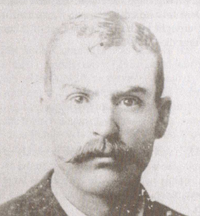 Sheriff
SheriffBenjamin Street
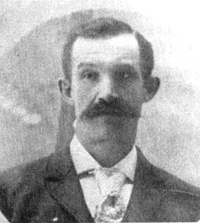 Sheriff
SheriffFrancis Caldwell
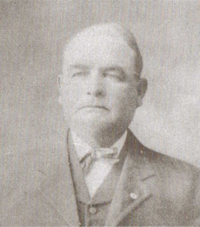 Sheriff
SheriffAlexander Smith
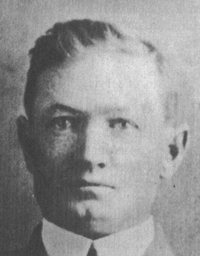 Sheriff
SheriffJames Poore
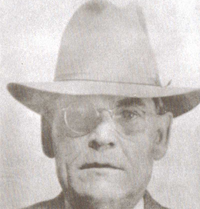 Sheriff
SheriffJohn Sharp
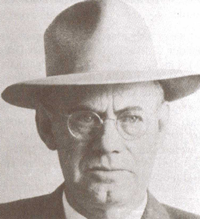 Sheriff
SheriffGlyn Johnson
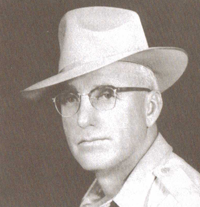 Sheriff
SheriffBuck Server
Benjamin Street’s parents were part of the westward migration in the 1860s. Benjamin Beauregard Street was born in Campton, California in 1860. The Street family joined the early settlers in Surprise Valley in 1867 and took up ranching near Cedarville. Ben Street married Margaret Lynn Underwood , and they had one daughter. In his tenure as sheriff, Ben Street was faced with dealing with one of the most notorious crimes in Modoc County. The Lookout lynching, in which 5 men accused of theft were hanged from Lookout bridges, was committed in 1901, before he became sheriff. However the charges weren’t filed until Street took office in January of 1902. The men accused of the lynching were prominent citizens of Lookout, Bieber and Stone Coal Valley areas. After the charges were made, Street and his deputies made the arrests. A long and well publicized trial in Alturas determined the fate of the accused men. On the last day of February in 1902, a jury declared all of the accused innocent. In 1911, Ben Street and his family moved to Stockton, California where Ben operated a livery stable. He and his family eventually moved to Santa Cruz County where he died in 1953.
Francis Warren “Frank” Caldwell came to Canby, California as an adult. He was born in Ohio in 1862. He settled in Canby with the intention of putting down roots. He took up land and bought several homestead; including land in Stone Coal Valley. Francis Caldwell operated one of the first stores and post offices in Canby and he was also a teacher. Religion and education were always high on his priorities for community involvement. He married Francis Miller of Stone Coal Valley and they had five children. The large house that they built in Canby is still standing today. While Caldwell served as sheriff, he moved his family into another large home in Alturas, below what is presently known as Tank Hill. During the time of Caldwell’s tenure, the County built a sturdy brick jailhouse on the south end of Alturas. That jailhouse, serving a different function, can still be seen in Veteran’s Memorial Park in Alturas. In 1910, four years after moving into Alturas, Frank Caldwell died of pneumonia at the age of 48.
A.E. “Elzie” Smith was born in 1867 in Iowa to Mr. and Mrs. Albert L. Smith. Elzie’s father had a colorful history. In his early twenties, Albert crossed the plains four times. He made his first trip to Nevada in 1860, driving a band of horses and mules. He returned to Iowa in 1865 and married. Elzie; his second son, was born there. Albert then crossed the plains with his family, driving a four-mule team amid the oxen teams of other members in the caravan to Nevada. He later traded his valuable mule team for mining claims that dwindled out within a month. That’s when he brought his family to Modoc and ran freight trains. Before he was elected sheriff in 1910, Elzie was a teamster with his father, and then undersheriff for Francis W. Caldwell. After Caldwell’s death, Smith was appointed sheriff for the remaining one-year term. By being elected in 1910 and 1914, he served nine years as sheriff. When four Eagleville stockmen were murdered in High Rock Canyon in the spring of 1911, Sheriff Elzie Smith formed a posse in Eaglville. After days of tracking in rugged country and winter storms, they cauht up with the band of Native Americans suspected of the crime. Even though they were finally cornered and ordered to surrender, they refused to do. In the gun battle that followed, one of the Native Americans, four men, two women and two boys were killed and one woman and two girls taken as prisoners. One member of the posse was killed. Sheriff Smith returned to Modoc County after that issuance of frontier justice with an even stronger reputation as a competent and courageous peace officer. His terms in office testify to the fact that he was respected. Elzie Smith never married. Albert L. Smith, Elizie’s father was 90 years old and still living in Alturas when Elzie died in 1930.
James Poore was the first Modoc County sheriff born in Modoc County. He was born in Fort Bidwell in 1880 or 1881. In adulthood, he became a rancher and stockman in the Cedarville area. During his term of office as sheriff, an Alturas newspaper reported Sheriff Poore’s “get-tough” policy for bootleggers: “He says he knows that a lot of people here in Modoc are making their own distilled spirits besides trading freely with professional bootleggers. He intends to enforce prohibition to the full extent. So in the future all jackass drinkers and concocters will be severly dealt with.” James Poore was a member of the Masonic Lodge and the Ben Ali Temple of the Shrine. He died in 1955 in Sacramento.
John Christopher Sharp served in what was nearly a law enforcement dynasty from 1922 through 1946. Six times he was elected by the people of Modoc County to the office of sheriff. John Sharp started his life in Surprise Valley, in a family that had settled there in 1864. He went to school in Cedarville and later worked as a rancher and blacksmith. He married Harriet Essex in 1912, and they had two daughters. After being elected and serving for four years as a Modoc County supervisor for District 2, Sharp filed as a candidate for sheriff. To accommodate his office of sheriff, John Sharp moved his family to Alturas. After he was elected, he appointed Robert D. Smith to the position of chief deputy sheriff. Sharp encountered many lawless acts. One of the most senseless crimes was a 1937 homicide that stemmed from a feud between two rival newspapers in Alturas. Claude McCracken from the struggling Modoc Mail newspaper was murdered by Harry French of the Alturas Plaindealer. The murder occurred in downtown Alturas in front of witnesses. French was tried and convicted of first degree murder. Following the footsteps of his predecessors in the years of prohibition, Sharp was constantly on the lookout for people manufacturing distilled spirits for the general public and for bootleggers. It was a busy time for law enforcement in Modoc County. John Sharp passed away in 1950.
Glyne Johnson was another native Modocer, born in Adin in 1893. His father owned and operated the Johnson Mill between Hayden and Ash Valley. After Glyne Johnson graduated from Wilson Preparatory School in Adin, he earned a teaching credential. He served in both world wars. He married Lois Harbert in 1921 and they had two sons. Glyne and his wife were talented musicians and they played in a local band for several years. Before he was elected sheriff, he worked for the U.S. Forest Service for a time. Most of his life he lived in Adin. He met with an untimely, accidental death three years into his term as sheriff. In the course of an ordinary day, Johnson was getting an automatic shotgun out of the back seat of his car. While pulling the gun out, it discharged and the whole force of the blast struck him in the neck. He was killed instantly. He was much respected, and his death in office was considered not only a great loss to his friends and family, but to the community as well.
Buck Server was born in Michigan and lived in several other states before he settled in Alturas. During his school years, he he spent more time following rodeos than attending school. As an adult, Buck was a ranch hand and continued riding broncos in and around Modoc. He also boxed semi-professionally from 1926 to 1930 as a heavyweight and during that time met the renowned fighters Max Bear and Maxy Rosenbloom. Buck Server married Maud Ester Hawkins and they had three sons and one daughter. They made their home in Alturas. He started his law enforcement career when he was elected constable of the Alturas township in 1934. Between that time and when he was appointed to fill the unexpired term of Sheriff Glyne Johnson, he was a deputy sheriff, an undersheriff and a probation officer for Modoc County. Server was known for his fearlessness. On several occasions when unarmed, Server disarmed gun-wielding subjects and made the arrests. He seldom carried a gun, but had his share of close calls. In one incident, he was called to a local tavern to deal with a drunk who was threatening people with a pistol. As Buck reached to get the man’s gun, the drunk fired and the hammer of the pistol caught the lawman in the web of skin between his thumb and forefinger. To quote then District Attorney Paul Baker, “Jeez, Server had guts.” Buck Server retired in 1962, but continued law enforcement for several years as a deputy in Washoe County, Nevada, tracking cattle rustlers. He died in 1990 at the age of 82.
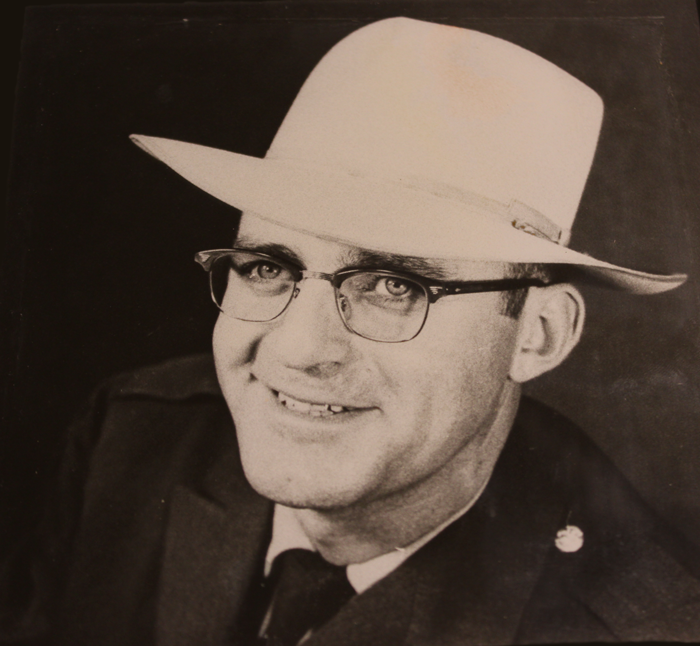 Sheriff
SheriffLynn Harris
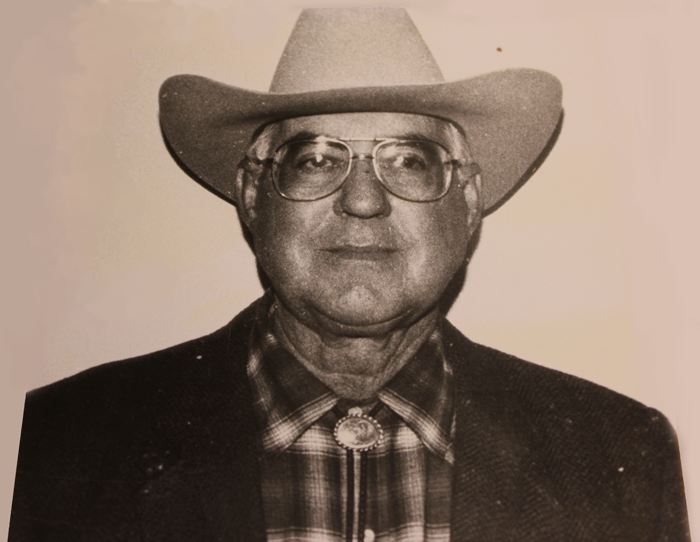 Sheriff
SheriffPerry Tilson
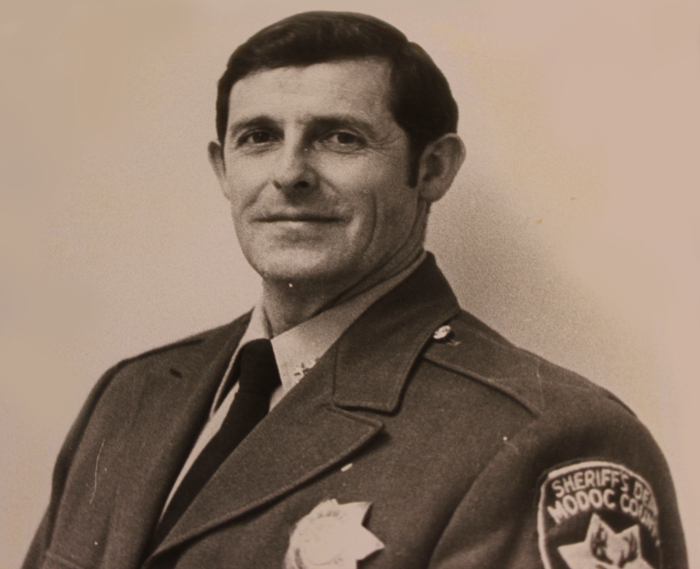 Sheriff
SheriffJohn Sweet
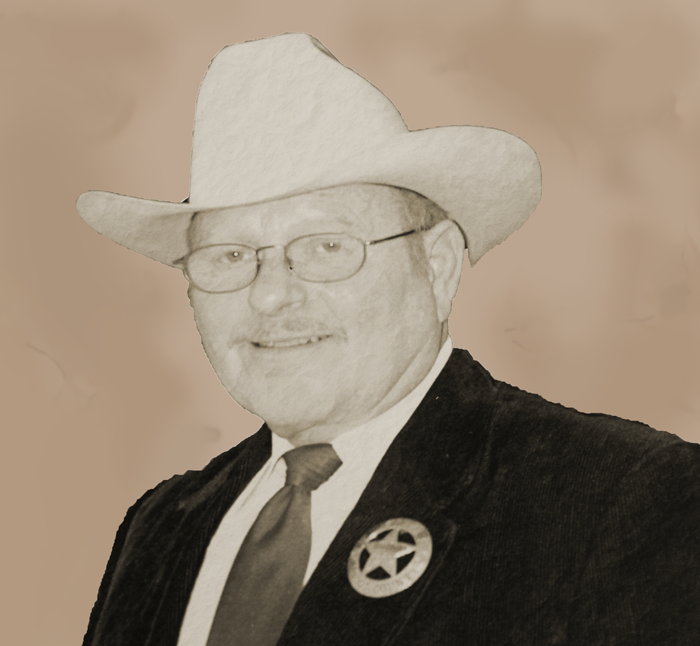 Sheriff
SheriffBruce Mix
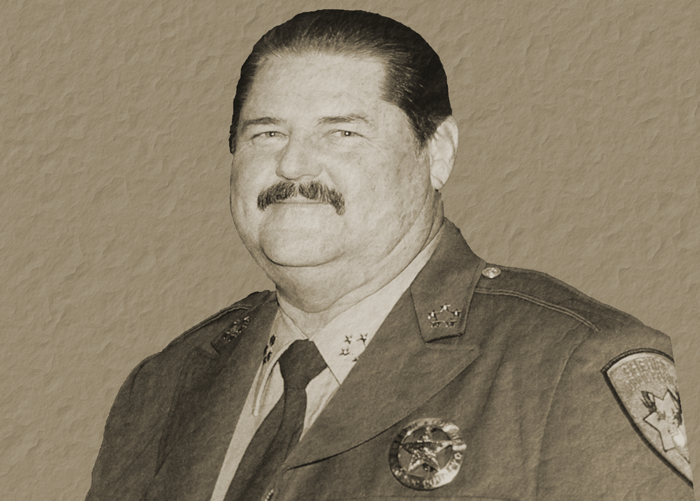 Sheriff
SheriffMark Gentry
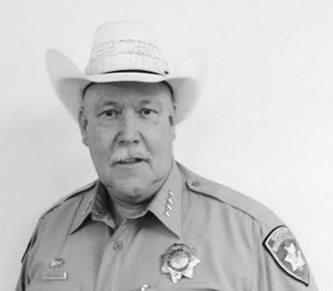 Sheriff
SheriffMike Poindexter
